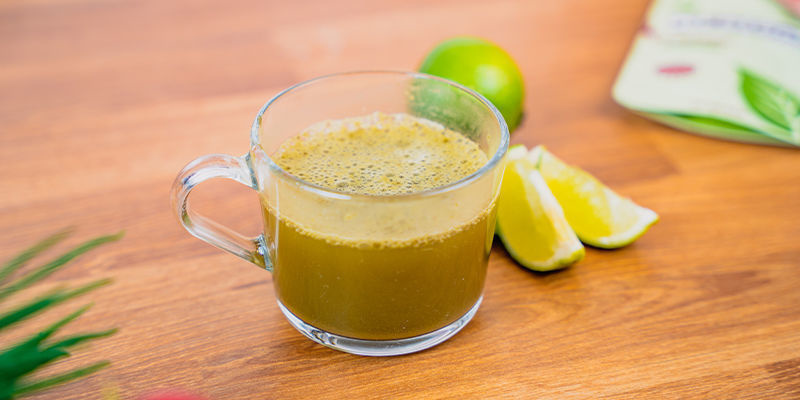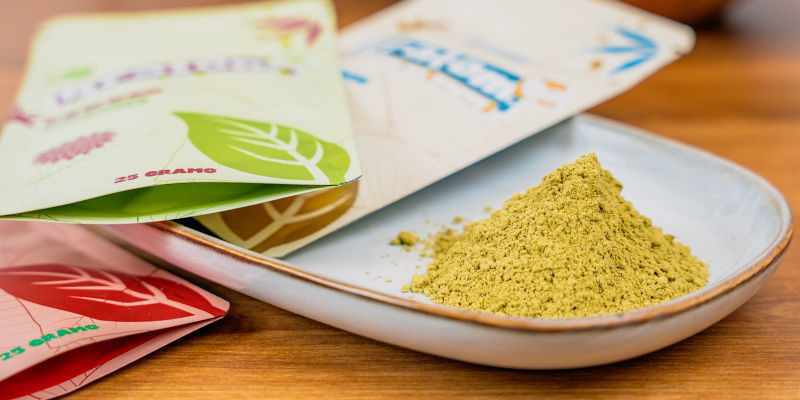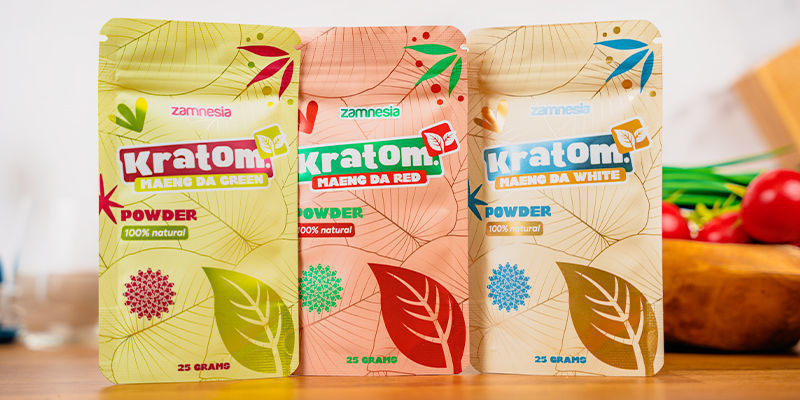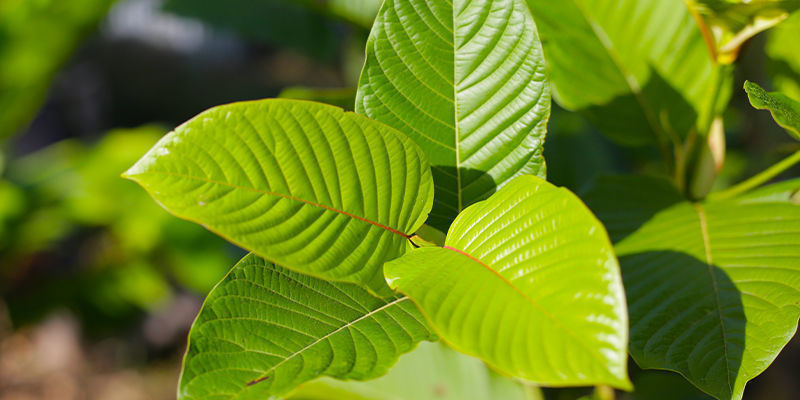
Everything you need to know about kratom
Kratom is a novel plant from Southeast Asia that's growing in popularity. Learn everything about its effects, history, and more, below.
Kratom, scientifically known as Mitragyna speciosa, is a tropical tree native to Southeast Asia. This herbal substance has been used traditionally for centuries due to its unique effects, which can be stimulating or sedative, depending on the dosage. Kratom products are now widely available and are gaining interest from users seeking alternative herbal remedies or a new way to get high.
This guide provides a comprehensive overview of kratom, covering:
- The plant's history
- How it's used
- Dosage
- Different kratom strains and their effects
- Kratom safety
- Kratom legality
Make sure to follow the links below for more specific information about all these topics and more.
History of kratom

Kratom has a long history of use in countries like Thailand, Malaysia, and Indonesia. Traditionally, farmers and laborers chewed kratom leaves or brewed them into tea to combat fatigue and increase productivity while working. Over time, its use spread across the globe. In recent years, kratom exposure has grown significantly, especially across the US and Europe.
In its native regions, kratom has been used both as a stimulant and as a traditional medicine. In Thailand, kratom use was so widespread that the government classified it as a controlled substance in the 1940s, citing concerns over its use as an opium alternative. However, in recent years, some Southeast Asian countries have reconsidered their legal stance on kratom due to its cultural significance and medical potential.
Today, kratom is becoming increasingly popular across the world—especially as the demand for natural alternatives to pharmaceuticals increases.
How to consume kratom

There are several popular ways to consume kratom, each offering different effects and onset times:
- Kratom tea: Brewing kratom powder or leaves into tea is a common and palatable method.
- Kratom powder: Often mixed with juice, yogurt, water, or smoothies for direct consumption.
- Kratom capsules: Offering a tasteless and convenient way to take pre-measured doses of kratom. These are especially beneficial for users who want to avoid the strong flavor of kratom while maintaining precise dosing.
A lesser-known method of consuming kratom is the "toss-and-wash" technique, where users place kratom powder in their mouths and wash it down with water or juice. While this is an efficient way to ingest kratom, the bitter taste can be off-putting to some. Learn more about the different ways to consume kratom and prepare it here.
How to dose kratom

One of the most interesting aspects of kratom is its dosage-dependent effect. At low doses, it is energizing and produces euphoria, while higher doses produce effects similar to opioids.
Here’s a breakdown of how to dose kratom:
- Low doses (1–3g): Generally stimulating, enhancing alertness and energy.
- Moderate doses (3–6g): A mix of stimulation and relaxation, depending on the strain.
- High doses (6–9g): Sedative effects, often leading to drowsiness and pain relief.
When dosing kratom, start low and slow and gauge your reaction to the substance. Keep in mind that factors like body weight, tolerance, and individual metabolism can all impact how kratom affects you. Some users report that taking kratom on an empty stomach increases its potency, while others prefer consuming it with food to reduce nausea.
It is also advisable to cycle your kratom use to prevent tolerance build-up. Consuming the same strain repeatedly can also lead to diminished effects over time, so some users rotate between different strains to maintain effectiveness. For a more detailed look at dosing kratom, click here.
The different types of kratom

Kratom strains can produce different effects and are categorized based on leaf vein color. Below you'll find a general summary of the different effects of common kratom strains, but remember that these can vary.
Understanding kratom strains
- Red vein kratom: Typically known for its relaxing and pain-relieving properties.
- Green vein kratom: A balanced strain offering moderate stimulation and relaxation.
- White vein kratom: Generally considered more stimulating and energizing.
There are far more differences than we’ve listed here. For more in-depth information, take a look at our articles about kratom strains and kratom colors.
How does kratom affect the body?

Kratom contains active compounds known as alkaloids, primarily mitragynine and 7-hydroxymitragynine, which interact with serotonin and opioid receptors in the brain. These interactions produce varied effects, including:
- Stimulation: Increased alertness, sociability, and energy at lower doses—comparable to the effects of caffeine.
- Sedation: Relaxation and drowsiness are common at higher doses, as are feelings of contentment and euphoria—similar to the effects of opioids.
Beyond these effects, some users report increased focus, reduced anxiety, and enhanced motivation when using kratom. However, not everyone responds to kratom in the same way. Some individuals may experience dizziness, dry mouth, or mild stomach discomfort.
More research is needed to fully understand kratom’s long-term effects. For more information on the diverse and contrasting effects of kratom, look at our blog on the effects of kratom and our comprehensive guide on kratom effects.
Is kratom safe to use?

Kratom is considered mostly safe, but its use does raise some concerns. Some common side effects of kratom use include:
- Nausea: Read more about kratom nausea here.
- Dizziness
- Constipation
- Dry mouth
Besides these mild side effects, there are concerns surrounding kratom dependency and withdrawal. Click here for a more detailed look at the side effects of kratom.
Do people experience kratom withdrawal?

Regular and prolonged kratom use may lead to dependence, and some users report withdrawal symptoms upon stopping. These may include:
- Irritability
- Anxiety
- Insomnia
- Muscle aches
Kratom withdrawal is typically less severe than opioid withdrawal. Nevertheless, it’s important to be aware of the potential of dependency and withdrawal before using a substance—so stay informed with this detailed article on kratom dependency and withdrawal.
Kratom drug testing

Kratom is not commonly tested for in standard drug screenings. However, specialized tests can detect its alkaloids— though the chances of being subjected to one of these tests are slim. The detection window for kratom and its active compounds may vary based on dosage and frequency of use. Follow this link for more information on kratom drug testing.
Kratom legality
The legal status of kratom varies across the world. While not as restricted as many other substances, kratom remains a controlled substance in several countries. Therefore, you should thoroughly research local laws before purchasing or using kratom.
Getting to know Mitragyna speciosa

Kratom is a unique plant that warrants more attention. While it has been long known and loved in Southeast Asia, it is still fairly unknown in the West—though that is changing. Before taking kratom, it’s essential to learn about its effects, how to dose it and understand the risks of prolonged use.
Due to a lack of scientific research into kratom, there's still a lot we don't know about this plant, its effects, and how it works in the body. As more information becomes available, we'll continue updating this page and our other articles—so check back with us regularly!
- Eastlack, Steven C., Cornett, Elyse M., Kaye, & Alan D. (2020, June). Kratom—Pharmacology, Clinical Implications, and Outlook: A Comprehensive Review - https://link.springer.com
- Suhaimi FW, Yusoff NH, Hassan R, Mansor SM, Navaratnam V, Müller CP, & Hassan Z. (2016 Sep). Neurobiology of Kratom and its main alkaloid mitragynine - https://pubmed.ncbi.nlm.nih.gov
-
 4 min
February 10, 2025
What is the difference between kratom colours?
Heard the hype surrounding kratom (Mitragyna speciosa)? Looking to incorporate its many benefits into your health and wellness routine? Keep reading to learn all there is to know about the three...
4 min
February 10, 2025
What is the difference between kratom colours?
Heard the hype surrounding kratom (Mitragyna speciosa)? Looking to incorporate its many benefits into your health and wellness routine? Keep reading to learn all there is to know about the three...
-
 5 min
February 4, 2025
The complete guide to the effects of kratom
Kratom can cause energizing effects at low doses and more soporific effects at higher ones. But why is this, and what are the nuances of the experience? Find out more here, as we delve into the...
5 min
February 4, 2025
The complete guide to the effects of kratom
Kratom can cause energizing effects at low doses and more soporific effects at higher ones. But why is this, and what are the nuances of the experience? Find out more here, as we delve into the...
-
 3 min
December 27, 2024
How To Consume Kratom
Kratom can be consumed in numerous ways and offers unique effects depending on the dose, strain, and other factors. Here we look at the different consumption methods for kratom, examining the...
3 min
December 27, 2024
How To Consume Kratom
Kratom can be consumed in numerous ways and offers unique effects depending on the dose, strain, and other factors. Here we look at the different consumption methods for kratom, examining the...





 United States
United States










